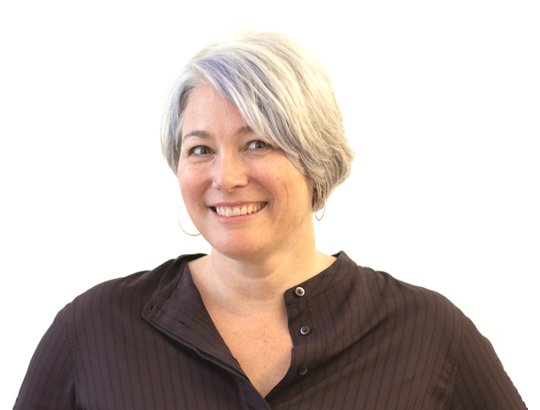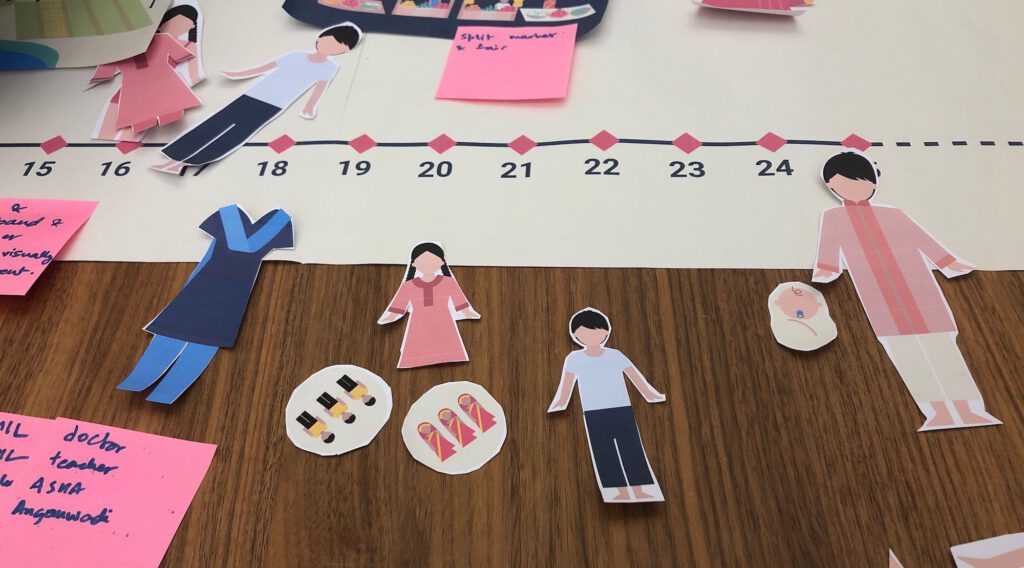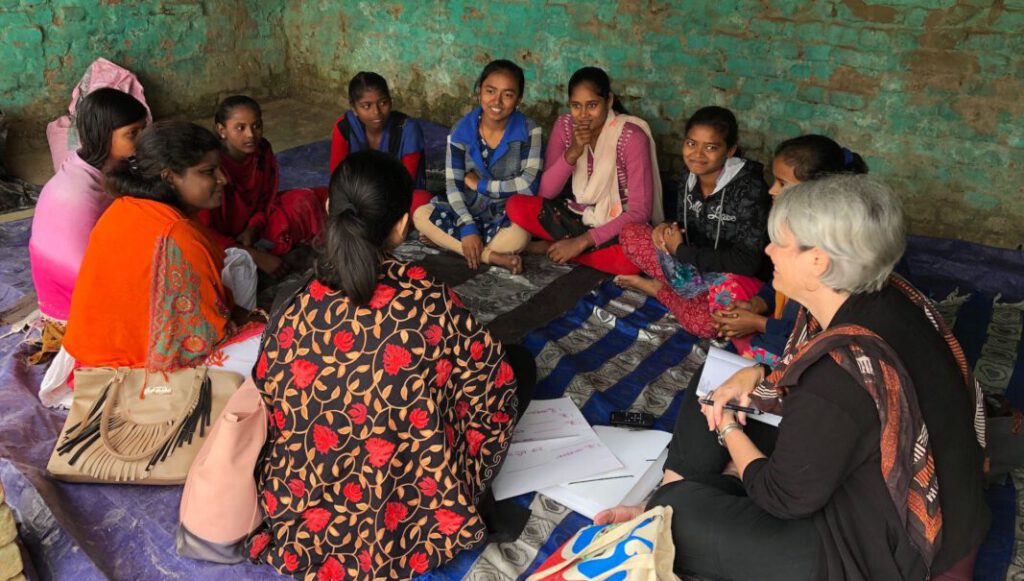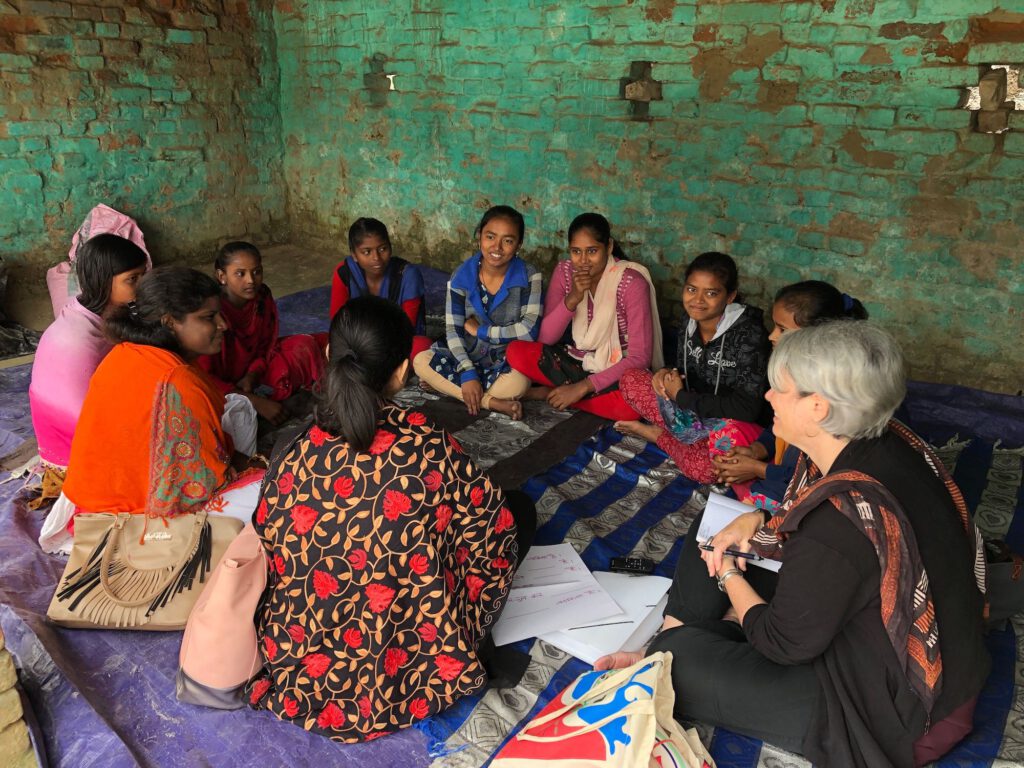Why finding the right questions holds the key to the strongest solutions
Using human-centered design and a life course approach, Core is reframing old questions to reveal new perspectives on women’s sexual and reproductive health. The three-year project has worked in India, Tanzania, and Kenya, finding connections between women’s past experiences and future outcomes to co-create new interventions for government, local partners, and donors to carry forward. As the team prepares to begin research in Nigeria next, we spoke with Core’s Senior Technical Advisor, Kate Ramsey about experiences with human-centered design for health programming.

What do you feel are the benefits of Scope’s integrated approach to Core and how does human-centered design support the project’s goals?
Scope’s approach to Core, working directly with girls and women during both research and the design process, means there isn’t just one touchpoint. The integrated way of working means that we are constantly checking back with the people for whom the solutions are designed. When you realise that initial ideas don’t work, you can change direction. It helps, in the long run, to have figured out early on and identified alternative solutions, rather than after an extended period of implementation when it is much harder to drop.
Did you encounter any challenges on your recent co-create trips to Bihar, India?
Much of our work across the four counties is focused on supporting adolescent girls, which has its sensitivities, especially when talking about sexual and reproductive health. It can be a difficult topic for girls, as it is still very taboo in these societies and around the world. In Bihar, to help girls open up we created the Rani dolls, which enable them to take on a different persona, an imaginary girl, adding distance from her own experience. In the intergenerational interviews, girls were reluctant to talk in front of their mothers and grandmothers. After seeing that dynamic we changed our approach so they could speak to us separately. Insights like this have shaped our approach to solution creation as we saw how important it was to create a safe space for girls to speak freely and to experiment and learn without fear of repercussions.

Another challenge is that some of the populations we most need to design for, the most underserved, have trouble explaining what it is they need as they have limited capacity and experience with self-expression of their needs. It’s important that we continue to think about how to increase their capacity and make sure all types of girls and women are represented when we do these exercises. Strong facilitation skills and interactive tools are one way we have overcome this, but we need to continue to find innovative ways to make sure their voices are represented and heard.
In what way does using the life course model help in terms of developing solutions?
Early intervention makes a huge difference in preventing life transitions from becoming negative or resulting in poor reproductive health outcomes. By focusing on transitions of the life course, Core has been able to identify interventions that may be unrelated to the health sector but have an impact on whether a woman remains healthy and/or seeks health services from the health sector. For example, in Kenya, if we are worried about a couple using family planning when they come together, we understand social gender norms may affect that interaction. To have the impact we would like, we must intervene before they first come together. In Tanzania, many transitions that girls go through are forced. For example when a girl’s mother becomes sick, there is less money for the family, the girl can no longer go to school and she is forced to begin a relationship she is not ready for with a man in order to take care of herself in the short term. Preparing girls to be resilient in the face of these challenges can help prevent the cascade of negative events that might follow a forced transition.
The life course model helps us to map and understand these types of transitions and to intervene beforehand in order to prepare girls and women and mitigate future health impacts.
What sexual and reproductive commonalities exist for women in the four countries? Can these shared experiences help translate solutions from one country context to another?
What we have found is that there are similar opportunity pathways across all these countries. The solutions might differ, what works in a context might differ but there are universalities. Across all contexts it is important we make young men part of the solution. This has been said for a long time, but we need to think about the ways we can be innovative in framing what it means to be a man and start a generational shift in terms of the different ways in which men can support women, rather than detract from women’s progress.
There is an opportunity to really rethink what it means to be healthy. People think of ill health more than they think of good health. We can spark a rebrand in terms of getting people to think about health in new ways so they take better care of themselves and prevent negative outcomes.

During your extensive career how has the approach to women’s sexual and reproductive health changed? Are there any current trends in tackling the issues which still persist in this area and restrict progress in gender equality?
In the Millennium Development Goal era our approach to women’s sexual and reproductive health narrowed. We made a lot of progress in terms of certain indicators but it became less holistic than the approach had been in the 90s coming out of the International Conference on Population and Development. Now, once again, there is a recognition that sexual and reproductive health is a broader concept which isn’t just about absence of ill health. There are opportunities for more holistic connections when women and girls do seek services if we can expand our understanding of what a service provides beyond biomedical interventions.
Looking at reproductive health with a gendered lens, changing the way we approach a problem and the questions we ask could change the intervention. With a problem such as “women lack access to family planning”, we need to look deeper to ask if services were available would women seek them out? What are the gendered relations that prevent that from happening? What are the other social forces that prevent that from happening? I see a move in that direction but I think we need to see a more explicit shift in the places we have found it hardest to make change.
In what ways do you feel Core could build on or share the new perspectives gained over the course of the project in order to maximise progress in the global health landscape?
One of the first steps towards finding new solutions and tackling persistent problems is trying to look at the problems differently. One contribution Core could make is reframing the issues to shed new light on what seems to be the same problems, but actually are not. The world is dynamic and things are moving, ever-changing, not just in the development sector but globally. If we cast new lenses on seemingly old problems, we could help make a contribution to advance the field with transformative innovations that are future thinking.
Read more about Core on the project website.
Name: Kate Ramsey
Location: Brooklyn, New York, USA
Experience: Nearly 20 years in global health, focusing on reproductive and child health and rights and health systems.
Currently: Completing a Doctor of Public Health in Global Health Systems at Columbia University Mailman School of Public Health.
Dissertation topic: How health system characteristics explain women’s experience of disrespect in childbirth care.
Career highlight: Participating in one of the first studies to document and test interventions to address disrespect in childbirth.
